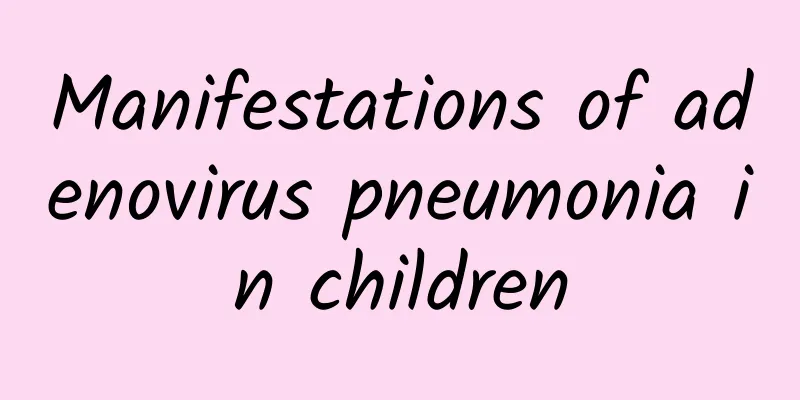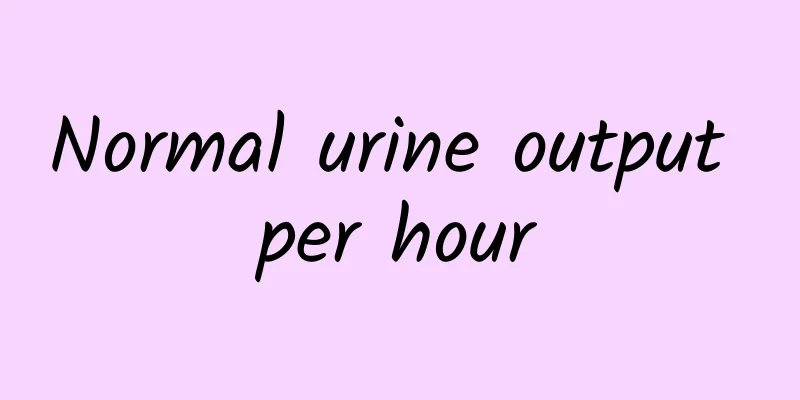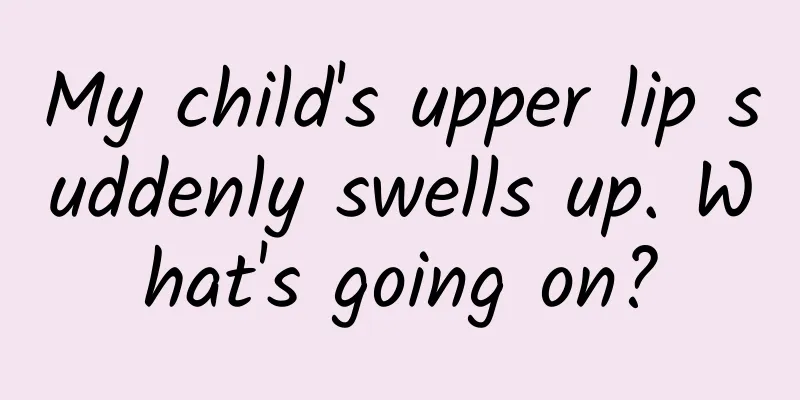Manifestations of adenovirus pneumonia in children

|
I believe everyone has heard of pneumonia. Pneumonia is a disease that everyone knows, so pneumonia is not unfamiliar to people at all. Pneumonia patients can be as young as young children, and pediatric pneumonia can also occur, but have you heard of pediatric adenovirus pneumonia? Have you ever seen how patients behave when they are sick? The editor will now provide you with additional knowledge about adenovirus pneumonia in children. Adenovirus pneumonia in children is a common type of viral pneumonia, and is more common in infants and young children aged 6 months to 2 years. The incidence rate is higher in winter and spring, and it is mostly transmitted through the respiratory tract. The onset is characterized by sudden fever, with the body temperature often reaching 39°C on the first or second day of the onset, and generally lasting for more than a week. Antibiotic treatment is ineffective. The age of onset is mostly between 6 months and 3 years old, mostly in winter and spring. Symptoms of upper respiratory tract infection appear within 1 to 3 days of onset, with fever of 38 to 40℃, accompanied by cough, or conjunctival congestion of both eyes. Generally, the symptoms worsen after the fourth day of onset. The child's face becomes pale, and he becomes drowsy or alternately drowsy and irritable. The cough further worsens. 6 to 7 days after the onset of the disease, the child develops symptoms such as rapid, difficult, and wheezing breathing, and blue lips and nails. Although treated with a variety of antibiotics or traditional Chinese medicines, the effect is not obvious. The body temperature of children with mild symptoms will drop sharply after 8 to 11 days, and symptoms such as cough and asthma will also disappear. Severely ill children have pale or gray complexion, listlessness, drowsiness or even coma, difficulty breathing, cold limbs, abdominal distension, and may also have combined heart failure, pulmonary and gastrointestinal bleeding, toxic encephalopathy, etc. The fever of those who recover will subside in 14 to 18 days, and the above symptoms will disappear quickly after the fever subsides. If the child has a bacterial infection, the fever may last longer. Children with severe pneumonia may eventually die from respiratory failure, with a mortality rate of about 10%. Even if pneumonia improves in critically ill children, more than half of them will still have sequelae of lung dysfunction such as recurrent coughing and wheezing, and a few will even develop cor pulmonale. Adenovirus pneumonia in children is also relatively serious, and the mortality rate is real. I think every family is sad to see their child's life slipping away little by little because of this disease. Therefore, when you encounter this disease, observe the symptoms carefully, and go to the hospital for treatment immediately if you find anything abnormal, don't delay. |
<<: What is the cause of thick white tongue coating?
>>: Treatment of autonomic nerve damage
Recommend
Which part should be moxibustioned when the menstrual flow is light?
Lack of menstruation is also a symptom of irregul...
Is it normal to have water discharge when the penis is erect?
Generally speaking, when the penis is erect, it m...
Why does my waist feel cold in summer?
The phenomenon of cold waist in summer is quite c...
Natto capsules efficacy
As for the therapeutic effects of some drugs, we ...
The effects and functions of Panax notoginseng powder to treat these common diseases
The main ingredient of Yunnan Baiyao, which we al...
The difference between Cistanche deserticola and Cistanche deserticola
There have been many detailed introductions about...
What are the side effects of sweat steaming
From the perspective of traditional Chinese medic...
Buttock pain when walking
Some people wake up in the early morning and go o...
Treatment of anaphylactic shock
There are many reasons for shock. Some people suf...
Effects of Stone Frog
The stone frog is what we usually call the stone f...
What are the methods of sitting bath for hemorrhoids
Patients with hemorrhoids need to pay attention t...
What are the causes and treatments for bad breath?
The problem of bad breath bothers many people, so...
How to overcome blood sickness
How to overcome blood phobia? This situation is m...
7 symptoms to check if you have a lot of toxins accumulated in your body
Poisoning symptom 1: Bad breath Bad breath refers...
Fresh Dendrobium officinale
I believe everyone is familiar with Dendrobium. I...









